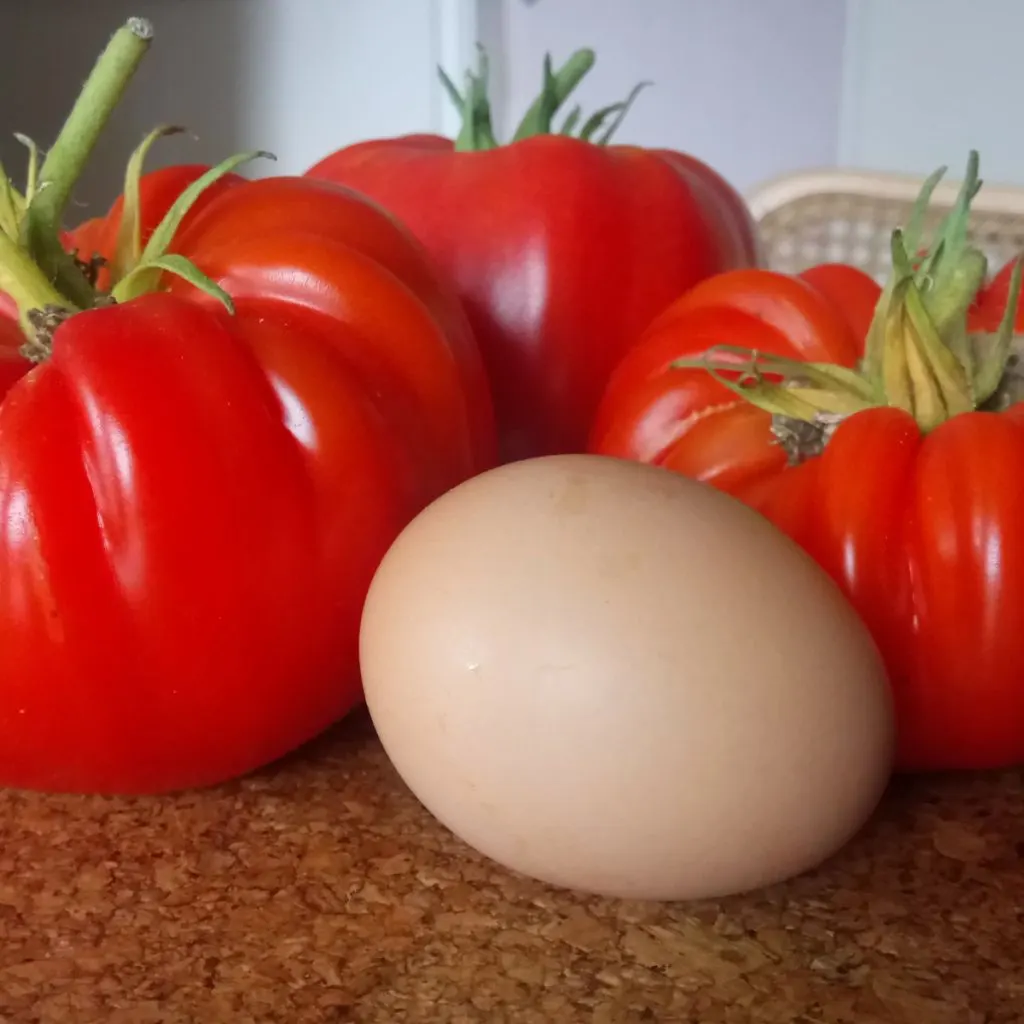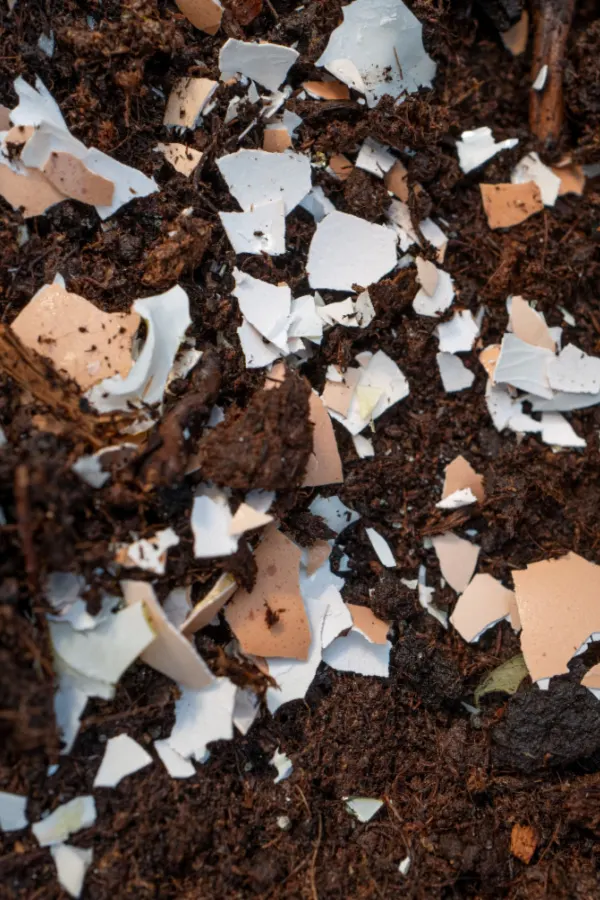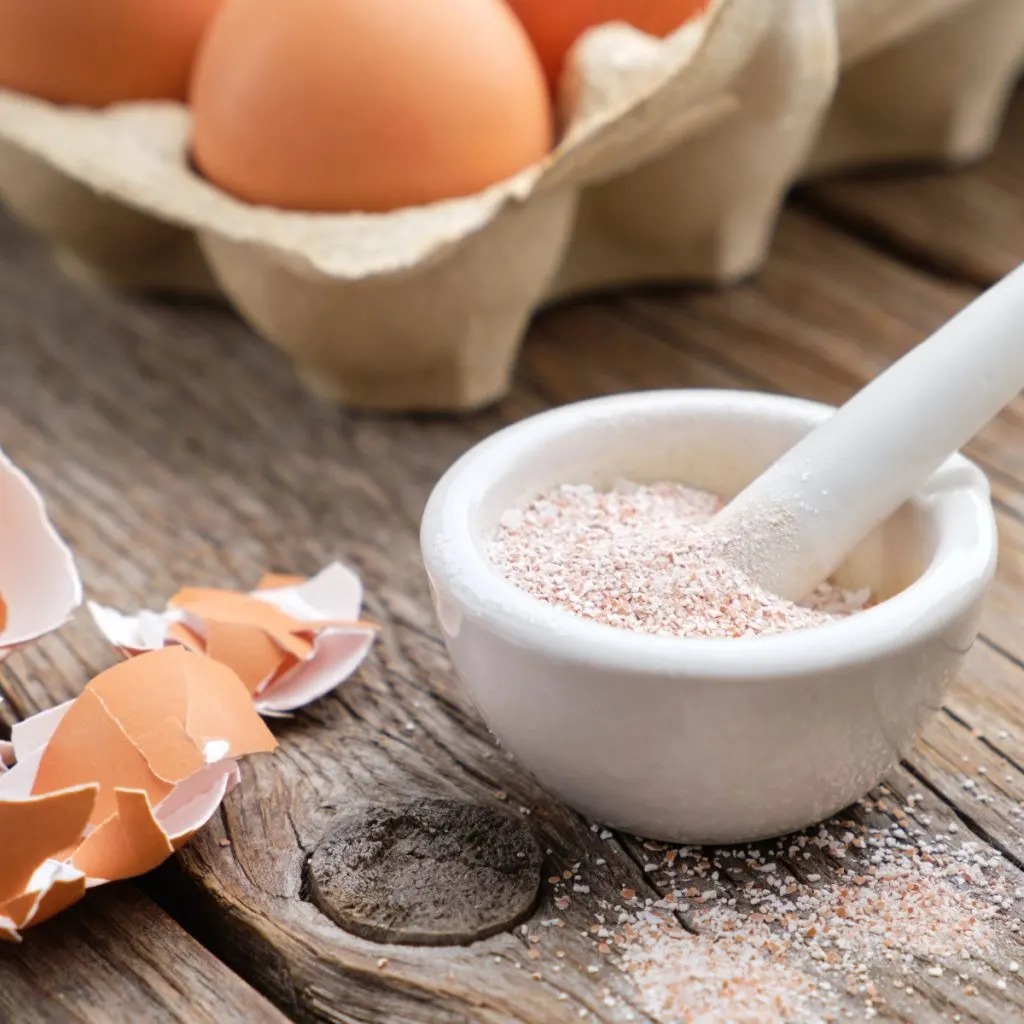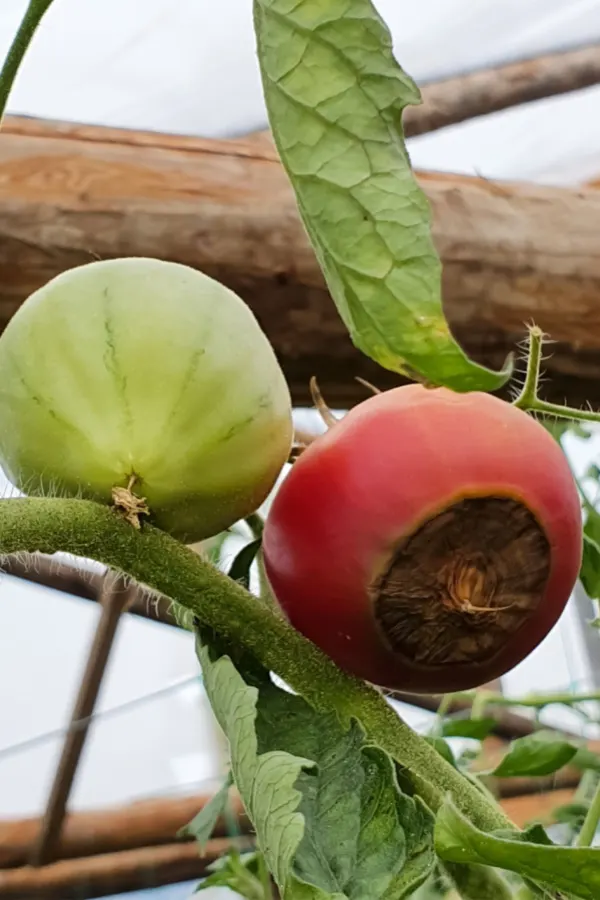One of the best and easiest ways to power up and energize your tomato plants is with egg shells – but how, when and where you use them to help grow your tomatoes is the real key to powering healthy plants and an amazing harvest!
There are certainly a lot of great pairings when it comes to tomatoes and eggs. For instance, can it really get any better than a bacon, egg, lettuce and tomato sandwich? Or when the freshest of fresh tomatoes ends up in the perfect vegetable omelet?
But perhaps the greatest tomato and egg pairing of all is using the leftover shells of an egg to help power and energize tomato plants as they grow. Not only can egg shells provide tomato plants with amazing nutrients, but they also can keep the plants and fruits healthy.

Egg shells are teeming with the nutrients that tomato plants need most. Nutrients like calcium, phosphorous and magnesium. In addition, they also contain trace but key amounts of zinc, potassium, iron and zinc. All of which happen to help with tomato growth and productivity as well.
But as incredible as egg shells can be for tomatoes – they can only help growing plants with their nutrients when they are used in the right way. Unfortunately, all too often, they simply aren’t. So with tomato growing success in mind, here is a look at how to best use egg shells to help your tomato plants this year!
How To Use Egg Shells To Grow Incredible Tomatoes
Let’s first take a look at how the nutrients in egg shells help tomato plants grow better. Then, we will cover exactly how you can use them to make the most of their power as your plants grow.
How Egg Shells Help Tomato Plants
The Power Of Calcium
The lion’s share of the nutritional makeup of an egg shell consists of calcium. In fact, nearly 95% of an egg shell is made from calcium carbonate. And calcium is extremely important to both the health and productivity of a tomato plant.

When a tomato plant first begins to grow into a mature plant, it uses calcium to build the cell structure in its stems and branches. Quite simply, without enough calcium from the start, your tomato plant won’t reach its full growth potential.
But that is not the only time calcium plays a role in your tomato plant’s health. Tomato plants also need calcium to enhance their ability to pollinate and for good enzyme production. Again, without enough calcium in the soil, the plants simply won’t be able to produce as many tomatoes as they should.
Calcium and Tomato Blossom End Rot
But perhaps the biggest area where calcium plays a role with tomato plants is in preventing blossom end rot. Blossom end rot is a common problem for many gardeners and can decimate a crop. Many think of blossom end rot as a disease, but it actually occurs when there is not enough calcium in the soil.
When this happens, the flowering end of a forming tomato cannot form properly. Because of this, it slowly turns brown on the end and rots. When it does, it ruins the fruit in the process. If severe enough, blossom end rot can ruin a plant’s entire crop.
Obviously, calcium is huge for tomato plants. But not to be lost are tomato plants’ need for phosphorous, magnesium, and other trace minerals that are in egg shells as well.
Listen In Below To Our Podcast On Using Egg Shells & Coffee Grounds!
Magnesium powers a tomato plant’s photosynthesis process. Meanwhile, phosphorous is huge with helping bloom production. And all of the other trace elements in egg shells also help tomato plants with health, vitality, and the ability to absorb water and energy from the soil too.
It’s easy to see how much power egg shells have to give your tomato plants. But, and this is key, you need to unlock that power just right to get it to them quickly. And here is exactly how to do it with ease!
How To Use Egg Shells To Help Tomato Plants
So how do you get the power of egg shells to help tomato plants and the soil they grow in right away?
Unfortunately, egg shells take a long time to break down. Although they contain all kinds of mineral power, until the shells break down and leach out their nutrients, they are of little value for powering up soil or the plants that grow in it.
Simply crumbling up egg shells into small pieces and putting them in your planting hole, or crumbling them on top of the soil will not help this year’s plants very much – if at all.

As the egg shell pieces break down over the summer months, they will eventually add calcium to the soil. That might help next year’s plants, but it won’t do much for powering the plants growing now.
This is exactly why whenever and wherever you use egg shells, the secret is to first grind and pulverize them into a fine powder. By grinding the egg shells down, you help them release their power almost instantly into the soil.
The good news – it’s easy and effortless to do. All you need is an inexpensive coffee grinder. With a few minutes of grinding, you will be left with fine egg shell powder. And that powder is perfect for powering your tomato plants in 2 great ways! Affiliate Link: Basics Stainless Steel Electric Coffee Bean Grinder
2 Ways To Use Egg Shell Powder – How To Use Egg Shells To Grow Incredible Tomatoes
There are two ways and times to use egg shell powder to power your plants. The first time is right when you plant your transplants. When planting, mix two to three tablespoons of egg shell powder into every planting hole.
This will put the power of egg shells right where your roots need it most. Of course, this is also the perfect time to mix in compost, worm castings and even coffee grounds as well to your planting hole. Together with the egg shell powder, it will provide a huge boost of power for your plants. See: How To Plant Tomatoes Right! 6 Simple Secrets To Grow Your Best Crop Of Tomatoes Ever.

The second time to use egg shell powder is right after you finish planting your tomatoes. Simply sprinkle a few more tablespoons of powder around each plant on top of the soil. Now, every time it rains or you water, the nutrients from the powder will leach down to the soil and roots.
This double dose of egg shell powder is the best way to get nutrients to your tomato plants fast. But with that said, there is still one more way to use egg shells for your tomatoes – and this time it is with egg shell pieces, and not powder!
Using Egg Shell Pieces – How To Use Egg Shells To Grow Incredible Tomatoes
Although egg shell pieces won’t release instant nutrients for your tomato plants, they can help protect them from slugs. A few crushed and broken egg shells circled in a ring around plants can keep slugs from getting to your stems.
The slug’s slimy body has a hard time crossing the jagged shells. When they do, the shells often slice through the skin of the slugs, killing them in the process. Even better, eventually, those egg shell pieces will also break down as well. Of course, when they do, they will give back their nutrients to the soil to help next year’s plants.
Here is to using egg shells to power your tomato plants this year. And to having your healthiest and most productive crop of tomatoes ever!
This Is My Garden
Follow Our Facebook Page For Great Gardening Tips And Advice! This Is My Garden Facebook Page
This Is My Garden is a garden website created by gardeners, for gardeners. Jim and Mary Competti have been writing gardening, DIY and recipe articles and books and speaking for over 15 years from their 46 acre Ohio farm. They publish three articles every week, 52 weeks a year. Sign up today to follow via email, or follow along!
